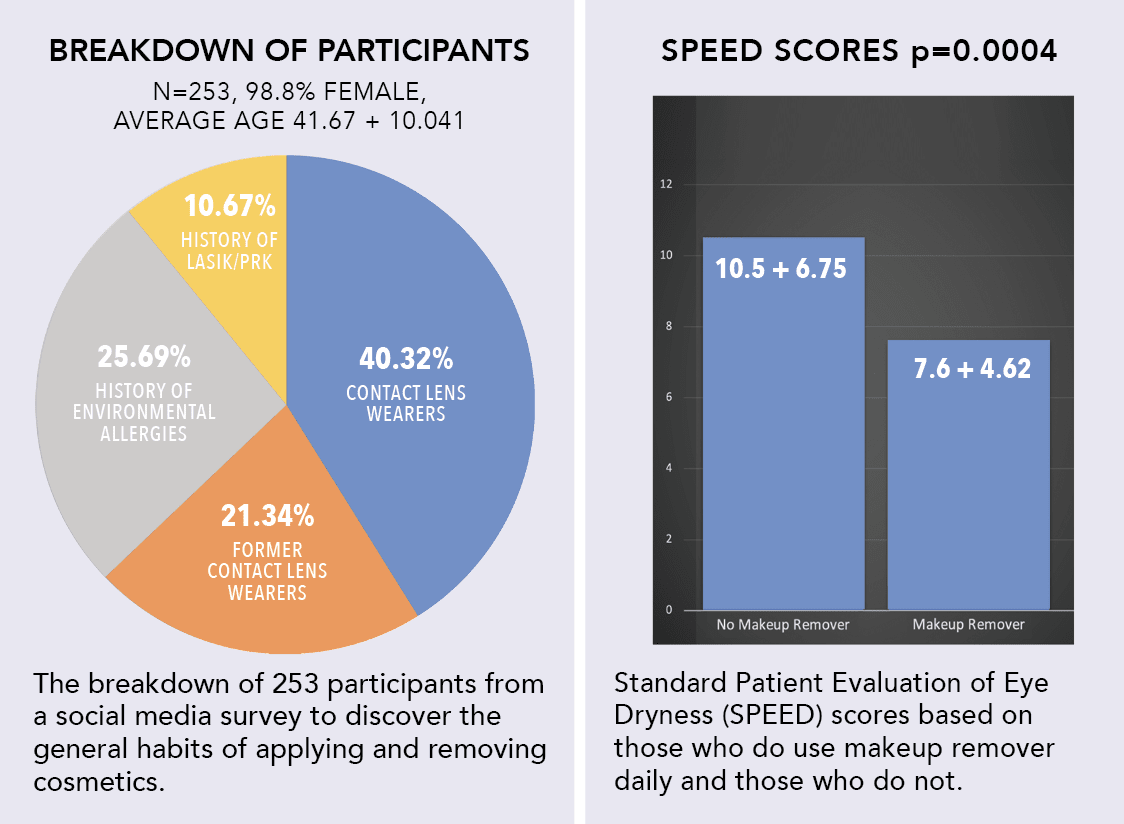Tips for healthier-looking lashes even with the use of mascara and extensions
Every eyecare professional understands that the lash is an important part of the anatomy of the eye. But do your patients understand its role in keeping the eye lubricated and removing particles that accumulate on the surface? Probably not. Therefore, they don’t understand that keeping the lash healthy is just as important as protecting their eyes.
Dr. Periman: Lashes play a protective role. They are meant to bend and flex. You want to coach patients to ensure they keep their lashes well-conditioned, healthy, and clean of things like demodex.
It’s important to encourage good daily habits, which include removing makeup every day, whether you’re using waterproof makeup or not. You want to recommend a product that’s been studied in the waterproof makeup-wearing demographic and shown to be safe, tolerable, and effective.
Dr. Wesley: It helps to buy a little patience for patients, especially if they have been doing unhealthy things that are tearing their eyelashes to shreds. It’s important to educate them on the lash growth cycle, manage expectations, and encourage them to stick with a healthier routine.
Dr. Said: Telling patients their beauty routine isn’t right can be difficult. I’ve found it easiest to tell patients, “I know you’re doing this because you care about the beauty of your lashes, what you’re doing is actually hurting them. Let’s find another product that will work.”
Dr. McGee: Eyelash extensions are absolutely something that we should discuss with our patients, because so many are using them and don’t want to give them up. Fellow
doctors shouldn’t get discouraged when their patient chooses to not listen to our advice. It shouldn’t stop us from still pursuing that education.
The Correlation Between Ocular Surface Discomfort and Cosmetics-Wearing Habits
In 2017, a group of eyecare professionals presented at the Association for Research in Vision and Ophthalmology (ARVO) annual meeting to report their data from a survey conducted to identify any relationships between cosmetics-wearing habits, ocular health history, and ocular symptoms.1 The study focused on the application and removal habits of cosmetic wearers and non-wearers to determine if there was a relationship between cosmetics and ocular surface discomfort and symptomology.
PARTICIPANTS
N=253, 98.8% female, average age
41.67 + 10.041
• 40.32% were contact lens wearers (CLW)
• 21.34% former CLW
• 25.69% had a history of environmental allergies
• 10.67% had a history of LASIK/PRK
RESULTS
• Average Standard Patient Evaluation of Eye Dryness (SPEED) score: 8.19 + 5.18.1
• Average UNC Dry Eye Management Scale was 3.28 + 2.32.
• Those who did not use eye makeup remover reported higher SPEED scores (Mean: 10.5 + 6.75) than those who did use eye makeup removers (Mean: 7.6 + 4.62). P=0.0004.1
• Participants reported wearing
makeup an average of 4.99 +2.22 days per week.1
• Makeup was removed an average of 4.68 + 2.49 days per week.1
• CLW noted more vision fluctuations post-makeup removal than non-CLW (p=0.000429).1
CONCLUSION
• Consumers use eye cosmetics frequently, averaging almost
5 days a week.
• The use of daily makeup remover improved overall ocular comfort.
• Eyecare professionals need to be aware of their patients’ habits regarding cosmetics and consider their application and removal as potentials for ocular discomfort.
Reference
1. O’Dell LE, Periman LM, Sullivan AG, Halleran C, Harthan JS, Hom MM. An Evaluation of Cosmetic Wear Habits Correlated to Ocular Surface Disease Symptoms. Invest. Ophthalmol. Vis. Sci. 2017;58(8):495.
Pro Tips for Patients
Check out some of the key pieces of advice that our panelists have put together when it comes to the care and protection of the eyelash.
- Demodex love to ingest and chew on lash extension glue. If your patient insists on using extensions, encourage the use of a hypochlorous spray and/or use of lotilaner ophthalmic solution.
- Encourage positive daily habits in patients. Ensure they are removing their makeup every day, no matter what.
- Scrubbing as hard as possible is not the best way to remove cosmetics. Teach your patients the dangers of rubbing too hard! They could be causing damage and premature aging, just from over-rubbing and damaging the delicate blood vessels in the area.
- Eyelashes, just like your hair, have a natural growth cycle (about 150 days). The better care you take of it during that time, the healthier, longer, and fuller they can be.
- Use conditioning and moisturizing based formulas that will allow for natural eyelash growth, letting the lash enjoy as long of a cycle as possible and grow to the maximum level.
- Look out for hidden ingredients in lash serums, such as isopropyl cloprostenate—a synthetic prostaglandin. This ingredient is often hidden by listing it much further down on the label.
SPONSORED CONTENT




